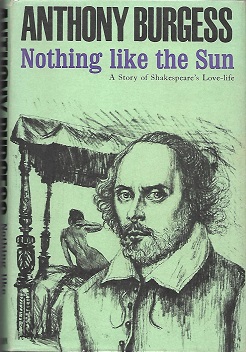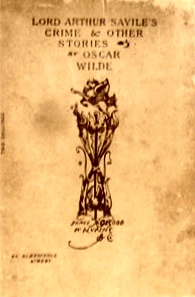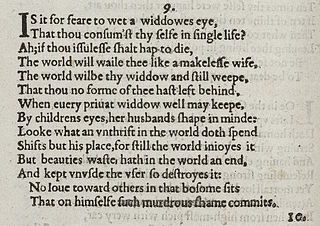
William Shakespeare (1564–1616) wrote sonnets on a variety of themes. When discussing or referring to Shakespeare's sonnets, it is almost always a reference to the 154 sonnets that were first published all together in a quarto in 1609. However, there are six additional sonnets that Shakespeare wrote and included in the plays Romeo and Juliet, Henry V and Love's Labour's Lost. There is also a partial sonnet found in the play Edward III.

Nothing Like the Sun is a fictional biography of William Shakespeare by Anthony Burgess first published in 1964. It tells the story of Shakespeare's life with a mixture of fact and fiction, the latter including an affair with a black prostitute named Fatimah, who inspires the Dark Lady of the Sonnets. The title refers to the first line of Sonnet 130, "My mistress' eyes are nothing like the sun", in which Shakespeare describes his love for a dark-haired woman.

William Shakespeare's sexuality has been the subject of frequent debates. It is known from public records that he married Anne Hathaway and had three children with her; scholars have examined their relationship through documents, and particularly through the bequests to her in his will. Some historians have speculated Shakespeare had affairs with other women, based on contemporaries' written anecdotes of such affairs and sometimes on the "Dark Lady" figure in his sonnets. Some scholars have argued he was bisexual, based on analysis of the sonnets; many, including Sonnet 18, are love poems addressed to a man, and contain puns relating to homosexuality. Whereas, other scholars criticized this view stating that these passages are referring to intense platonic friendship, rather than sexual love. Another explanation is that the poems are not autobiographical but fiction, another of Shakespeare's "dramatic characterization[s]", so that the narrator of the sonnets should not be presumed to be Shakespeare himself.

William Hughes is one potential candidate for the person on whom the "Fair Youth" of Shakespeare's Sonnets is based. The "Fair Youth" is a handsome, effeminate young man to whom the poet addresses many passionate sonnets. Some sonnets can be interpreted as puns on the name "William Hughes". However, no real life person of that name can easily be identified with the character.

Lord Arthur Savile's Crime and Other Stories is a collection of short semi-comic mystery stories that were written by Oscar Wilde and published in 1891. It includes:

Sonnet 3 is one of 154 sonnets written by the English playwright and poet William Shakespeare. It is often referred to as a procreation sonnet that falls within the Fair Youth sequence.

Sonnet 30 is one of the 154 sonnets written by the English poet and playwright William Shakespeare. It was published in the Quarto in 1609. It is also part of the Fair Youth portion of the Shakespeare Sonnet collection where he writes about his affection for an unknown young man. While it is not known exactly when Sonnet 30 was written, most scholars agree that it was written between 1595 and 1600. It is written in Shakespearean form, comprising fourteen lines of iambic pentameter, divided into three quatrains and a couplet.

Sonnet 145 is one of Shakespeare's sonnets. It forms part of the Dark Lady sequence of sonnets and is the only one written not in iambic pentameter, but instead tetrameter. It is also the Shakespeare sonnet which uses the fewest letters. It is written as a description of the feelings of a man who is so in love with a woman that hearing her say that "she hates" something immediately creates a fear that she is referring to him. But then when she notices how much pain she has caused her lover by saying that she may potentially hate him, she changes the way that she says it to assure him that she hates but does not hate him.

Sonnet 9 is one of 154 sonnets written by the English playwright and poet William Shakespeare. It is a procreation sonnet within the Fair Youth sequence.

Sonnet 11 is one of 154 sonnets written by the English playwright and poet William Shakespeare. It is a procreation sonnet within the 126 sonnets of the Fair Youth sequence, a grouping of Shakespeare's sonnets addressed to an unknown young man. While the order in which the sonnets were composed is undetermined, Sonnet 11 was first published in a collection, the Quarto, alongside Shakespeare's other sonnets in 1609.

Sonnet 13 is one of 154 sonnets written by the English playwright and poet William Shakespeare. It is a procreation sonnet within the Fair Youth sequence.

Sonnet 14 is one of 154 sonnets written by the English playwright and poet William Shakespeare. It is a procreation sonnet within the Fair Youth sequence.

Sonnet 20 is one of the best-known of 154 sonnets written by the English playwright and poet William Shakespeare. Part of the Fair Youth sequence, the subject of the sonnet is widely interpreted as being male, thereby raising questions about the sexuality of its author. In this sonnet the beloved's beauty is compared to both a man's and a woman's.

Sonnet 36 is one of 154 Shakespeare's sonnets written by the English playwright and poet William Shakespeare. It's a member of the Fair Youth sequence, in which the speaker expresses his love towards a young man.

Thomas Thorpe was an English publisher, most famous for publishing Shakespeare's sonnets and several works by Christopher Marlowe and Ben Jonson. His publication of the sonnets has long been controversial. Nineteenth-century critics thought that he might have published the poems without Shakespeare's consent; Sidney Lee called him "predatory and irresponsible." Conversely, modern scholars Wells and Taylor assert their verdict that "Thorpe was a reputable publisher, and there is nothing intrinsically irregular about his publication."

Sonnet 67 is one of 154 sonnets written by the English playwright and poet William Shakespeare. It's a member of the Fair Youth sequence, in which the poet expresses his love towards a young man and is a thematic continuation of Sonnet 66. In this poem, the speaker's anxiety about the social difference between him and his beloved takes the form of a criticism of courtly corruption. This sonnet was placed first in the pirated and mangled edition of 1640.

Sonnet 144 was published in the Passionate Pilgrim (1599). Shortly before this, Francis Meres referred to Shakespeare's Sonnets in his handbook of Elizabethan poetry, Palladis Tamia, or Wit's Treasurie, published in 1598, which was frequently talked about in the literary centers of London taverns. Shakespeare's sonnets are mostly addressed to a young man, but the chief subject of Sonnet 127 through Sonnet 152 is the "dark lady". Several sonnets portray a conflicted relationship between the speaker, the "dark lady" and the young man. Sonnet 144 is one of the most prominent sonnets to address this conflict.

Sonnet 109 is one of 154 sonnets written by the English playwright and poet William Shakespeare. It's a member of the Fair Youth sequence, in which the poet expresses his love towards a young man.

Sonnet 110 is one of 154 sonnets written by the English playwright and poet William Shakespeare. Sonnet 110 was published along with the other sonnets in the 1609 Quarto. The sonnet falls in place with the Fair Youth sequence of Shakespeare's sonnets, in which the poet expresses his love towards a young man. There are many different theories by various scholars of who this young man may be. However, there has been much debate whether or not this sonnet was written about Shakespeare's disdain with the stage and actors.

The Prince Tudor theory is a variant of the Oxfordian theory of Shakespeare authorship, which asserts that Edward de Vere, 17th Earl of Oxford, was the true author of the works published under the name of William Shakespeare. The Prince Tudor variant holds that Oxford and Queen Elizabeth I were lovers and had a child who was raised as Henry Wriothesley, 3rd Earl of Southampton. The theory followed earlier arguments that Francis Bacon was a son of the queen. A later version of the theory, known as "Prince Tudor II" states that Oxford was himself a son of the queen, and thus the father of his own half-brother.




















